Find out when and how to drop baby’s swaddle and still have your baby sleep well. Sleep doesn’t have to be ruined just because the swaddle is dropped!
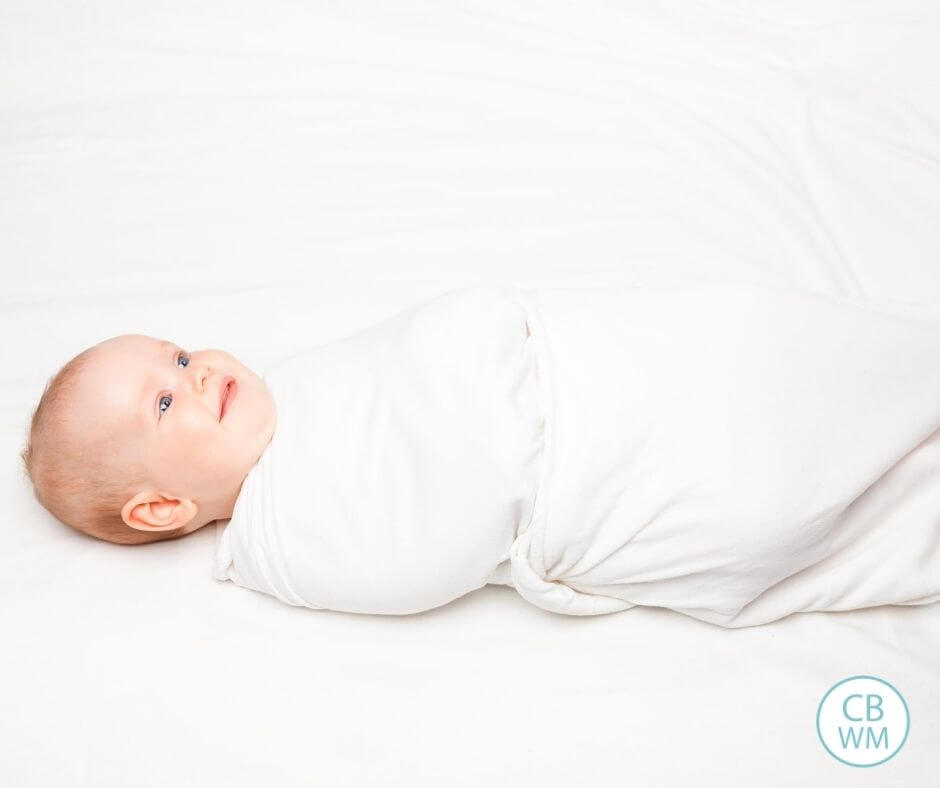
Dropping the swaddle can be a scary thing if your baby is sleeping very well. Personally, when my baby is sleeping well, I do not want to change a thing!
“If it ain’t broke, don’t fix it.”
Using a swaddle has so far been very helpful in getting your baby to sleep well. It helped prevent the startle reflex, also known as the moro reflex, from waking baby up from naps early.
The swaddle is especially helpful for newborns. It mimics the womb and helps comfort newborns.
Some day, however, the time comes when a baby needs to drop the swaddle. This can be for a variety of reasons:
- Baby starts to dislike being swaddled
- Baby starts to roll to tummy while swaddled, which can be a dangerous sleeping position without arms free. Increased mobility leads to increased need to drop the swaddle
- Baby is just ready to drop it
- Insert your reason here
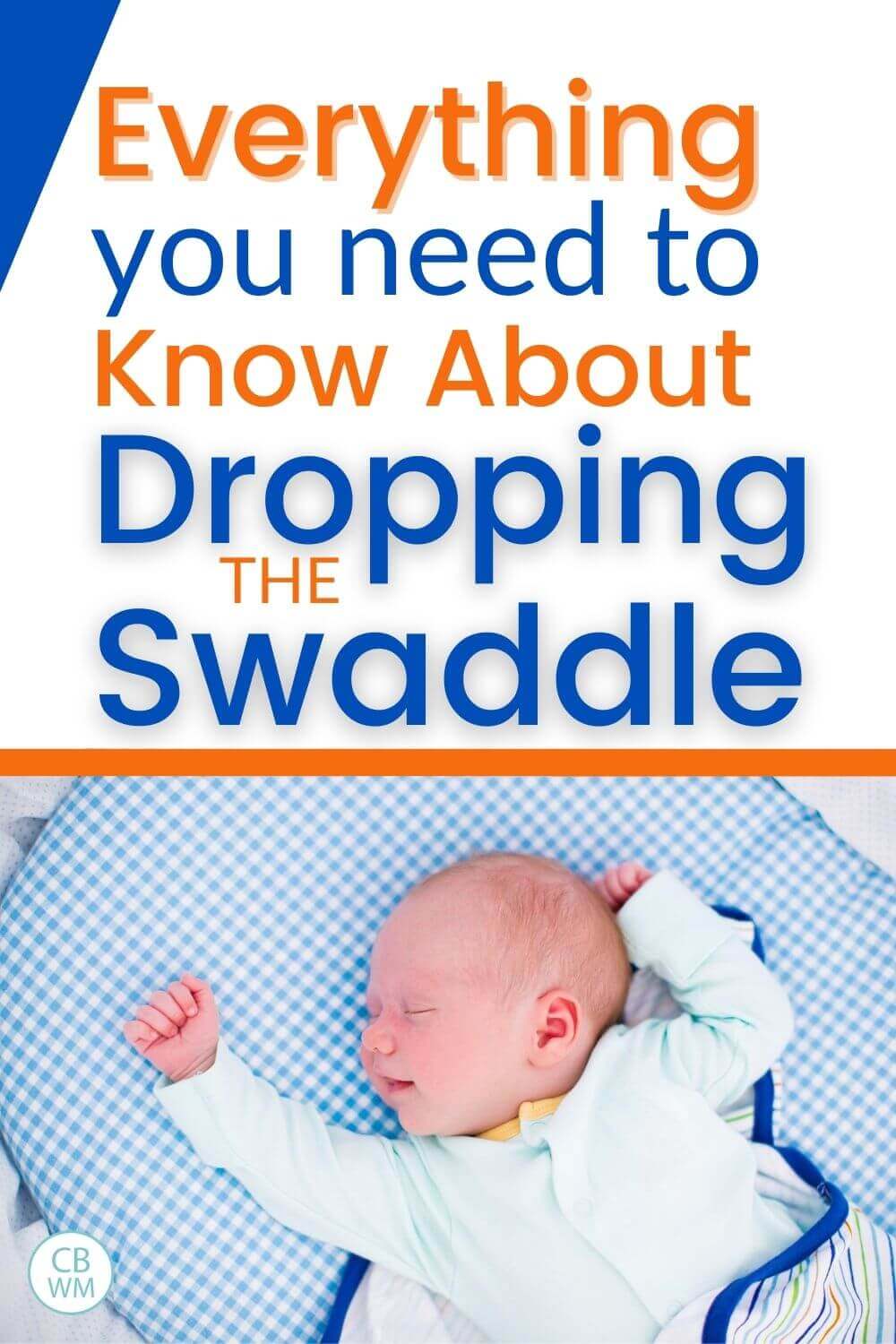
Post Contents
Signs Baby is Ready to Drop the Swaddle
What are signs your little one is ready to drop the swaddle? You can see some reasons in my post When To Stop Swaddling Your Baby.
Here is a short list:
- Rolling To Tummy While Swaddled: If your baby starts rolling to her stomach, she might be ready to drop the swaddle. This doesn’t necessarily mean your child is ready, but this is a big reason people stop swaddling–ready or not. A baby on her tummy without her hands available isn’t safe. If your baby can roll over, it might be time.
Once your baby starts rolling over during tummy time, watch for this to happen during naps. - Improved Motor Control: When baby has improved motor control and baby’s arms to randomly flail about, it is a good sign baby is ready to try to slseep without the swaddle. When baby’s startle reflex is gone, she might be ready.
Most babies seem to be ready to drop the swaddle between 3-6 months old (but don’t live by that age range–that is most, not all). All babies develop fine and gross motor skills at an individual rate. - Sleeping Habits: If your child is sleeping well and happily, you probably don’t need to push dropping the swaddle.
If your child is sleeping fitfully, consider dropping it. This is especially true if your child was sleeping well and then suddenly starts not sleeping well. There are, of course, other reasons for poor sleep, but make this a consideration.
Brinley showed no signs when I started her first arm out, but after a couple of weeks of that she started getting mad sometimes at nap time. It wasn’t a huge thing, but it was out of character. It wasn’t until I dropped the swaddle all together that she went back to happy.
Note that some people worry about baby being swaddled and reaching milestones on time. Brinley was swaddled for a long time and still met her milestones.
Common Ages for Dropping the Swaddle
Like I said, most babies seem to be ready to drop the swaddle sometime between 3-6 months of age.
There are, however, babies younger who drop the swaddle and babies older who drop the swaddle.
Most of all, don’t feel pressure to drop the swaddle or to keep the swaddle. If your baby needs to be swaddled longer than “most,” don’t worry about it! In a poll I did, reader Danielle commented:
“Looking back, I don’t know why I felt such pressure to stop swaddling her at 3 & 6 months. She clearly wasn’t ready at either of those times. I was letting other people’s comments make me feel insecure about my decision to swaddle. I should have known it wasn’t a big deal and that eventually when she was ready we would stop.”
I think this is the perfect comment for us to remember. She is absolutely right.
If your baby isn’t ready, so long as there is not a safety concern, you don’t need to push it. Your baby will be ready someday.
If you suspect your baby is ready to drop the swaddle, give it a try!
If you try and it doesn’t go well, go back to swaddling.
Methods for Dropping the Swaddle
The final big question people have is “How do I do it?”
I always like to do my testing during the final nap of the day–so typically the third or fourth.
This is often a “cat nap” (meaning it is 30-60 minutes long) and it is right before bedtime, so it isn’t going to throw the whole day off if things don’t go well.
I am really a big fan of taking things slowly. I find taking things slowly with babies means you keep things as smooth as possible.
Some people prefer to go “cold turkey” and have a rough week or so and then have it behind them. I don’t like rough weeks, but we all have different preferences and personalities so pick a method that rings true to you.
The method you choose will also depend on your reason for dropping the swaddle.
You might have a baby rolling over and need to go cold turkey because it is a safety issue. Maybe you have a time deadline and need to work within that time constraint.
Whatever method you choose, absolutely feel free to tweak any method to work best with your baby and your family.
Also, keep your same sleep routine. You just cut out the swaddle part of the nap routine or bedtime routine.
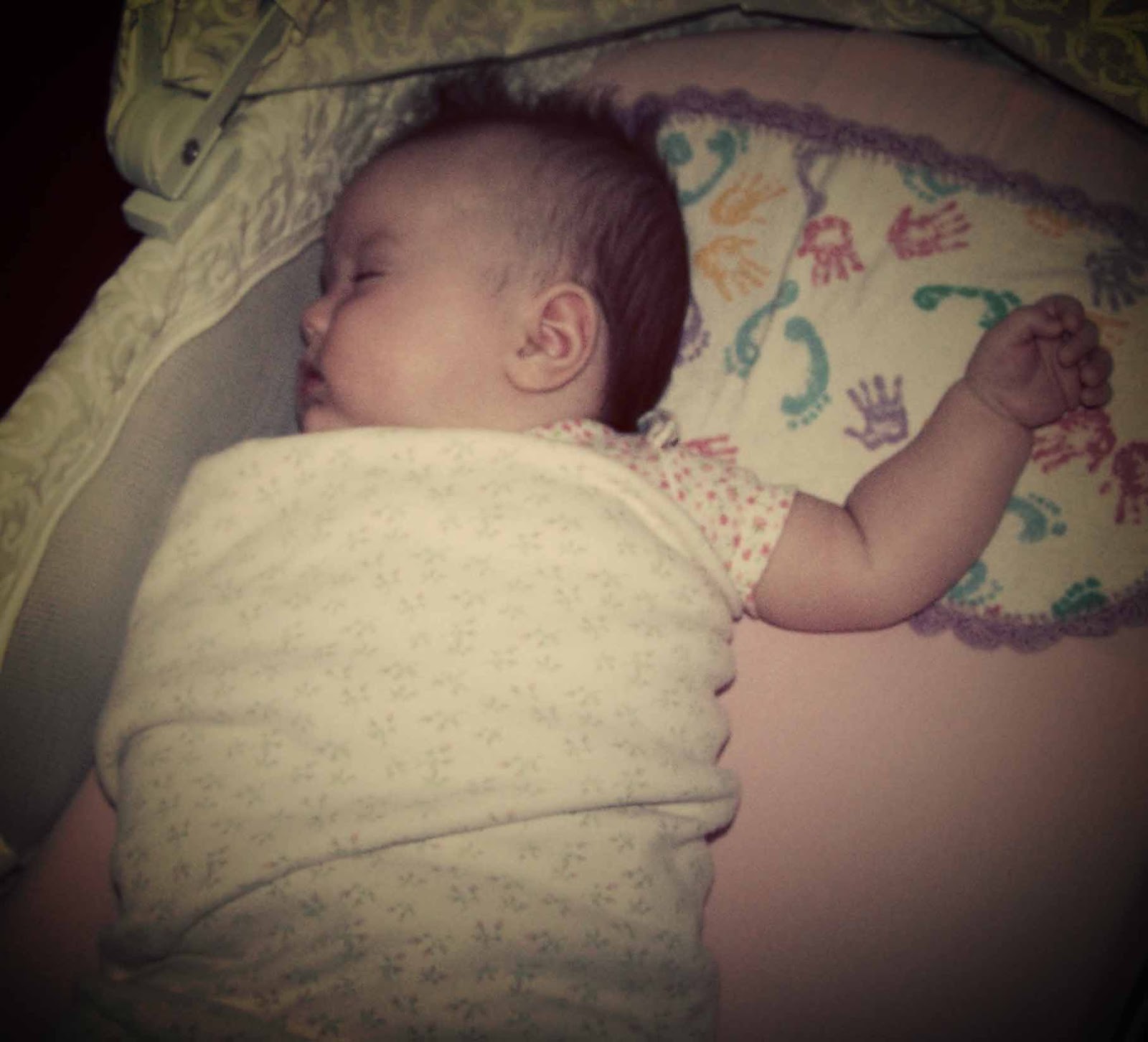 |
| 3 moth old Kaitlyn with one arm out |
One-Arm Weaning
This is the method I have used for all of my girls (Brayden was never swaddled).
- I start on the third (or last) nap with one arm out of the swaddle. If the nap goes well enough for my liking, we continue on with this for a week.
- The next week, I leave one arm out for the last two naps of the day. The test of this nap is that baby needs to make it through a transition (the 45-60 minute mark into the nap). With the final nap, baby doesn’t transition typically. I do this for a week, making sure baby can transition well with one arm out.
- The third week, I leave one arm out for the first nap (assuming we have three naps). So at this point, one arm is out for all of our naps. If this goes well, I do this for 3-4 days, then…
- I leave one arm out for night sleep. We do this for 3-7 days.
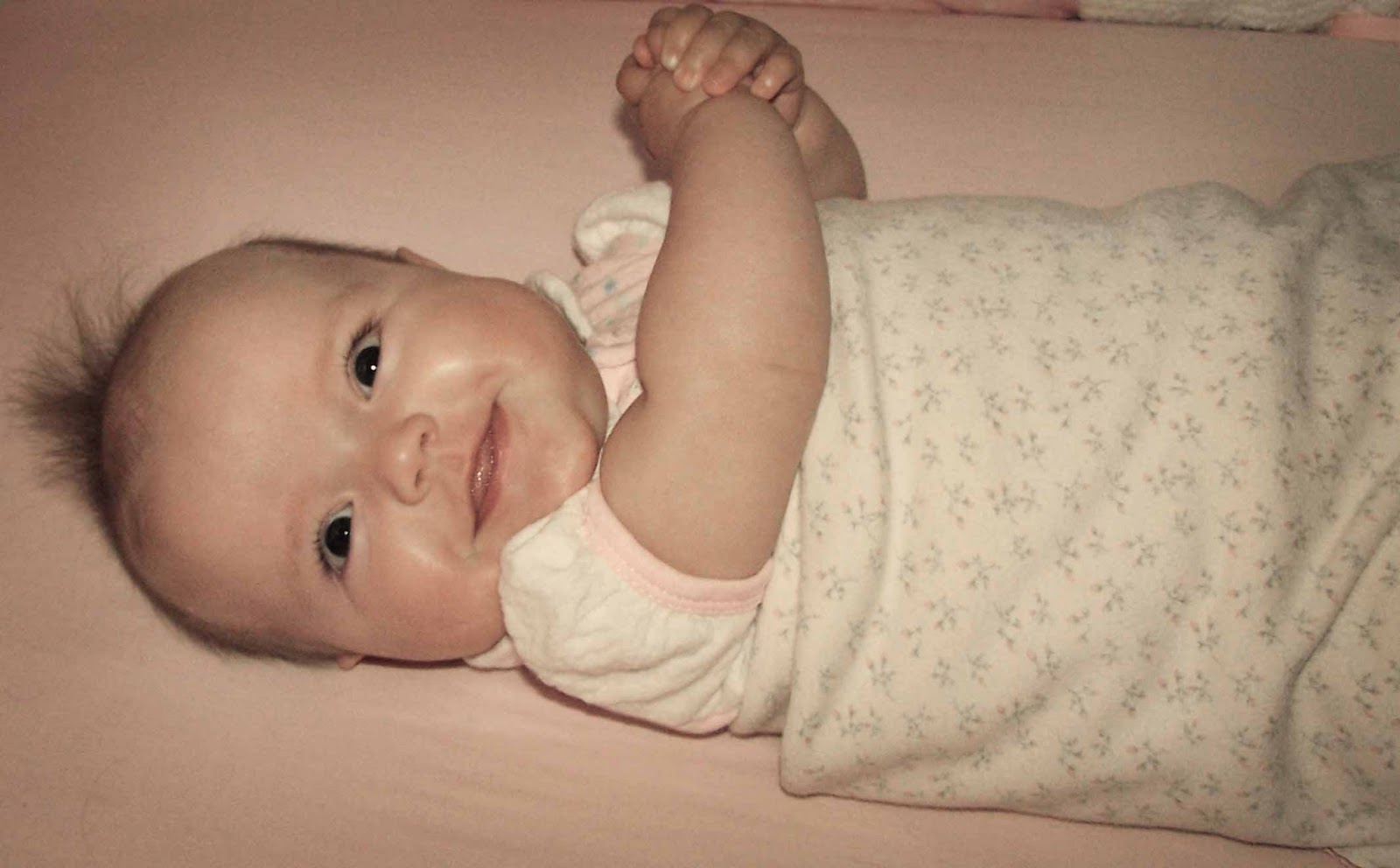 |
| 4 month old Kaitlyn with two arms out |
By now, it has been about a month since we started one arm out. You see this is a long process! Next I move on to phase two.
- I start on the third (or last) nap with two arms out of the swaddle. I still swaddle the trunk of the baby’s body. If the nap goes well enough for my liking, we continue on with this for a week.
- The next week, I leave two arms out for the last two naps of the day. The test of this nap, again, is that baby needs to make it through a transition (the 45-60 minute mark into the nap).
- The third week, I leave two arms out for the first nap (assuming we have three naps). At this point, both arms are out for all of our naps. If this goes well, I do this for 3-4 days, then…
- I leave one arm out for night sleep. If things go well, then we are done!
With Kaitlyn and McKenna, once we started the one arm out, things progressed smoothly through the weaning.
With Brinley, she did well with one arm, then when I tried two she was not happy.
So we waited two weeks or so until she started getting upset and we moved on to having both arms out.
You can definitely take this method faster than I do if your baby is able. You could take it to every few days you change, or you could do it so all naps are one-arm at the start, wait a week, then do night, wait a week, then all naps both arms out, etc.
Tweak the idea to fit you. It is a long transition process, but it works well!
You can see a sequence of photos of Brinley following this method in the photos below.
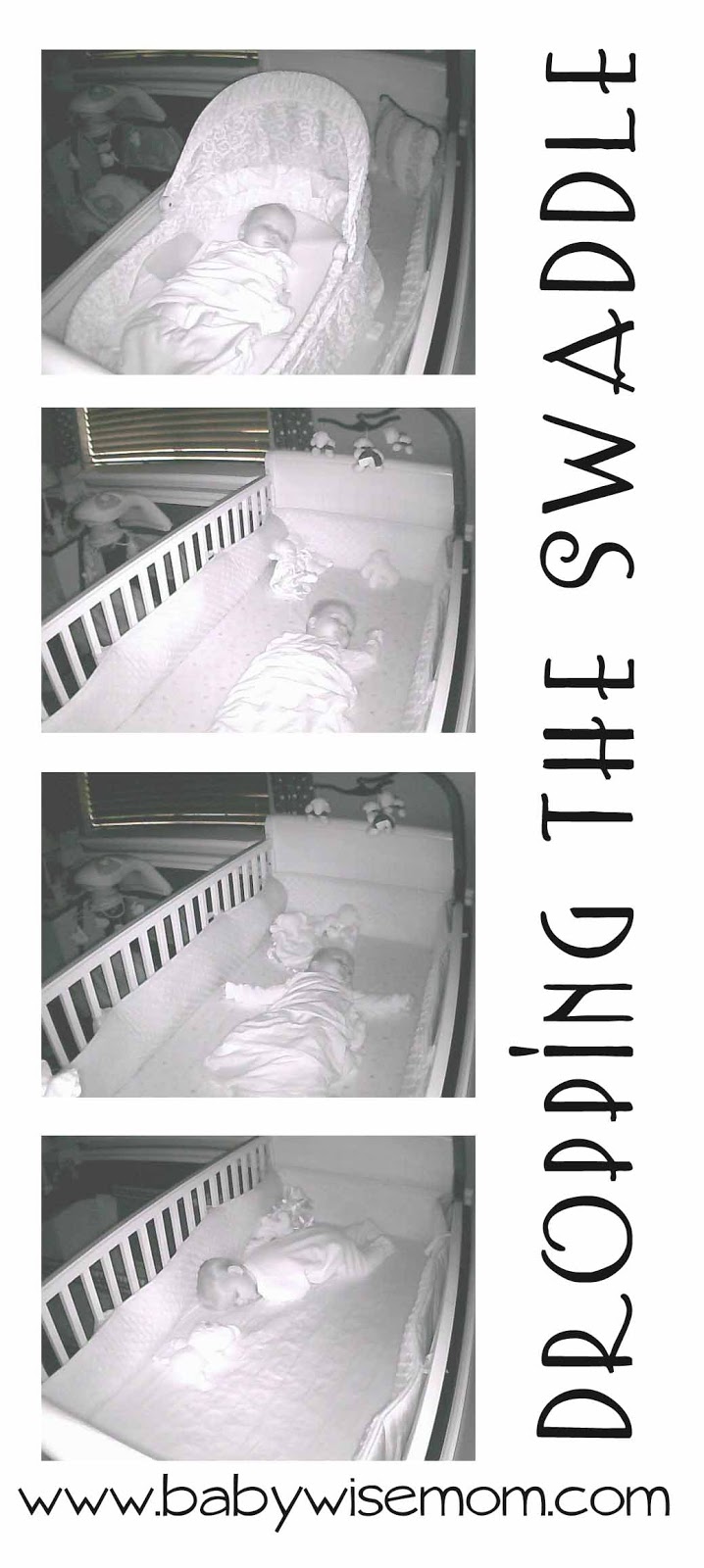
Sleep Aid or Transitional Swaddle
There are many items out on the market that help baby transition from swaddling. You might be able to continue swaddling with a different swaddle blanket.
Two examples of transitional blankets are the Zipadee Zip and Baby Merlin’s Magic Sleepsuit.
Many people love, love, love these transition suits. I would find them very helpful in a situation where your baby is rolling while swaddled but isn’t really ready to sleep without a swaddle.
I considered these products for Brinley since she was getting older and still wanting to be swaddled. I thought it could be a good transition item.
It definitely could be. If she was my first or second baby, I probably would have gotten one because I could use it later. I couldn’t justify spending the money, though, when there was no real need for us. It would have been something else to transition out of in the future.
So I decided to stick with the swaddling until she was ready to drop the swaddle altogether. You might find it helpful to purchase one of these.
Cold Turkey
Another popular method for dropping the swaddle is cold turkey. This means you just take the swaddle away one day and don’t look back.
Many people find with this method that there are 3-7 days of rough naps and night until baby gets used to it.
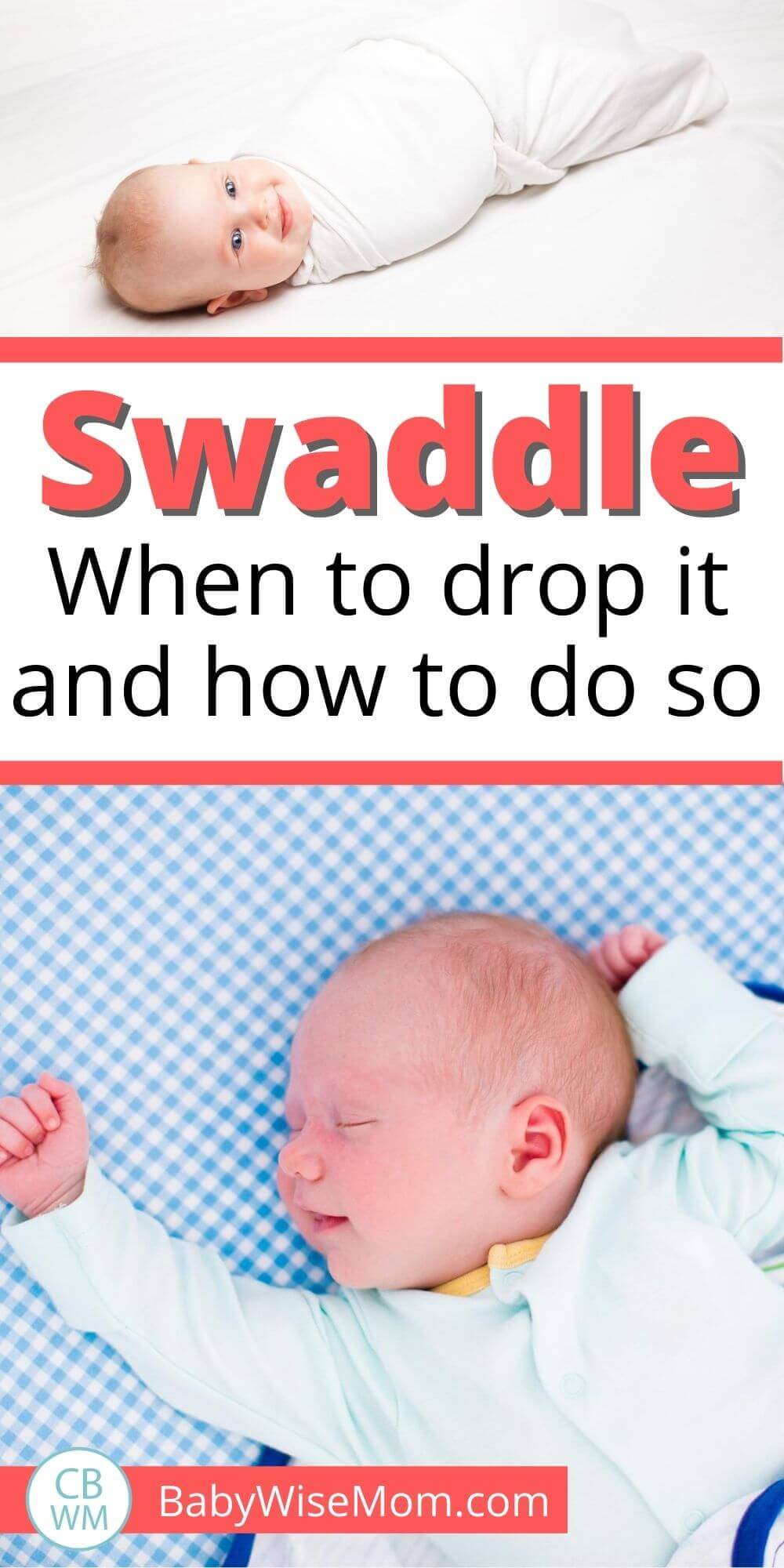
Combo
Some people do some combo of these ideas. Some start weaning slowly, and then move to just finishing the process cold turkey.
Always trust yourself in what you think your baby needs. Try it, if it doesn’t work out, tweak it and move forward.
Also, it is still okay to use white noise for baby even though you won’t have a swaddled baby.
Blankets After Dropping the Swaddle
If your baby needs extra blankets after you drop the swaddle, look into a sleep sack (the Halo Sleepsack is popular) or some sort of wearable blanket so your baby can stay warm and safe.
Sleeping with loose blankets in the crib is still a hazard with your baby, so avoid using those. You still want to practice safe sleep recommendations and avoid suffocation.
Conclusion
If you suspect your baby is ready to drop the swaddle, don’t be afraid to give it a try! Just think of how much easier it will be to change diapers for diaper changes at night.
If it doesn’t work, swaddle her back up and try again when you think she might be ready in the future. And again, don’t stress about it. Your baby will drop the swaddle when she is ready as an individual–on her own time table.
Related Posts
- How To Help Your Baby Sleep Better with Swaddling
- When Sleep Props Are Okay (And When to Avoid Them)
- Swaddling Baby in Hot Temperatures
